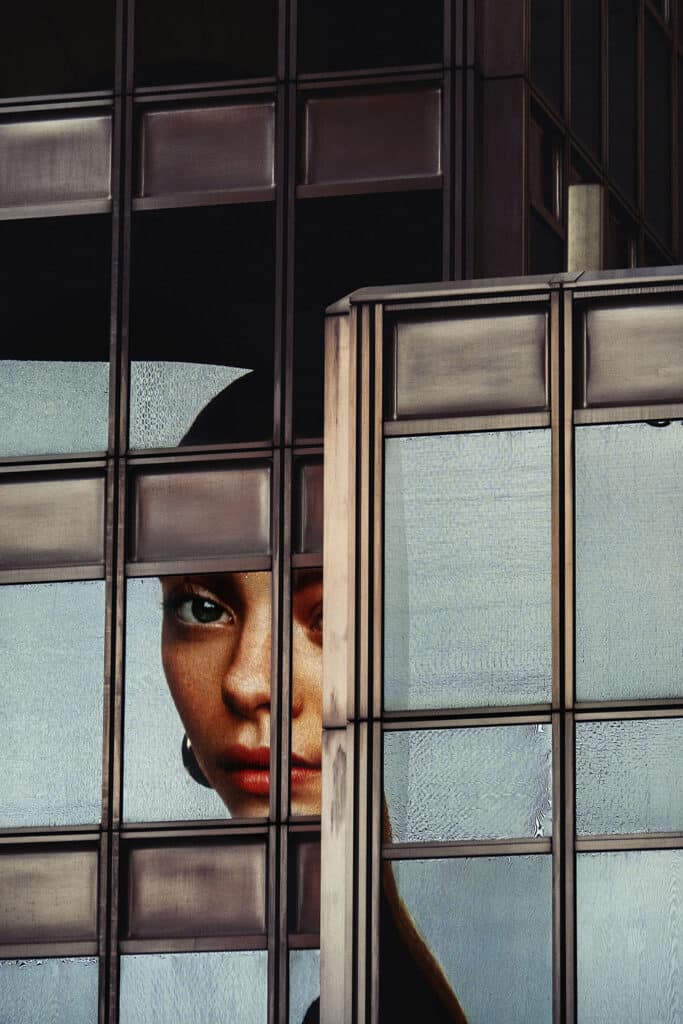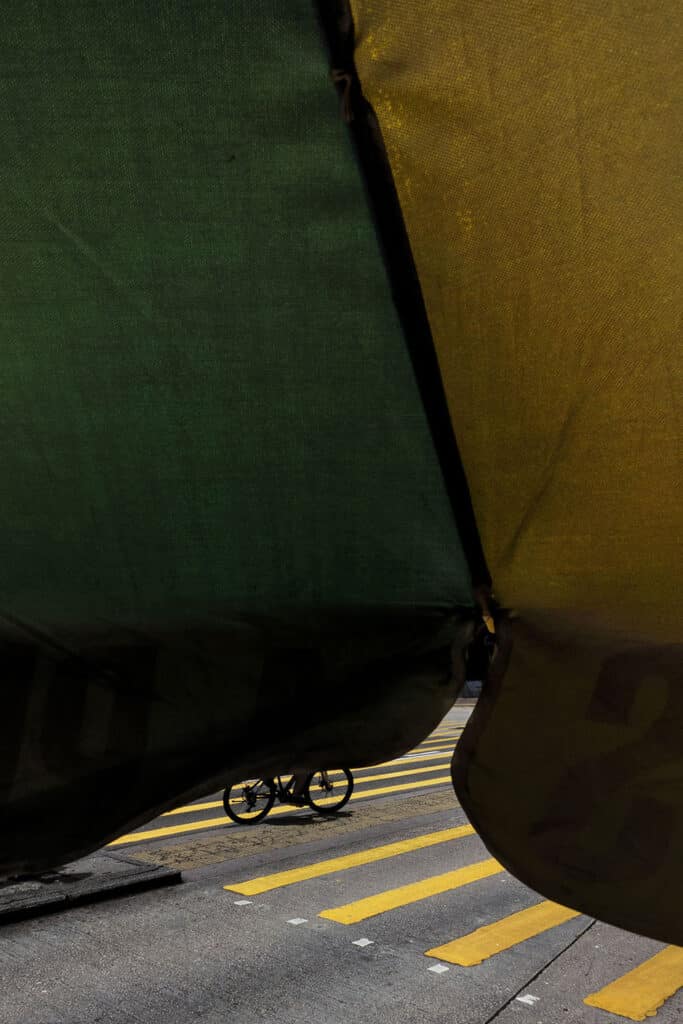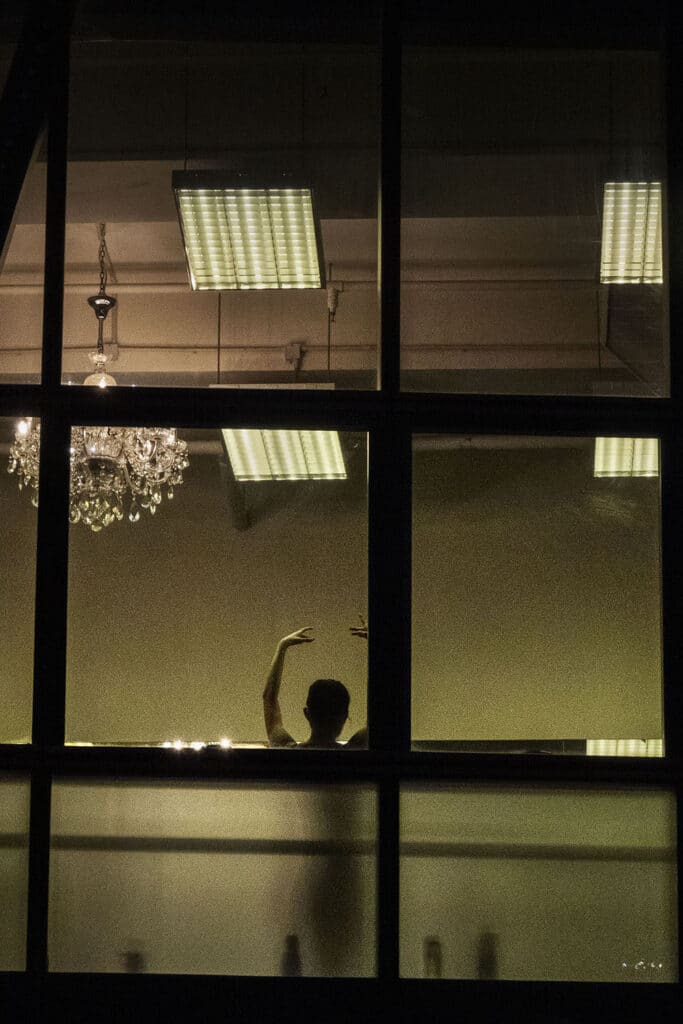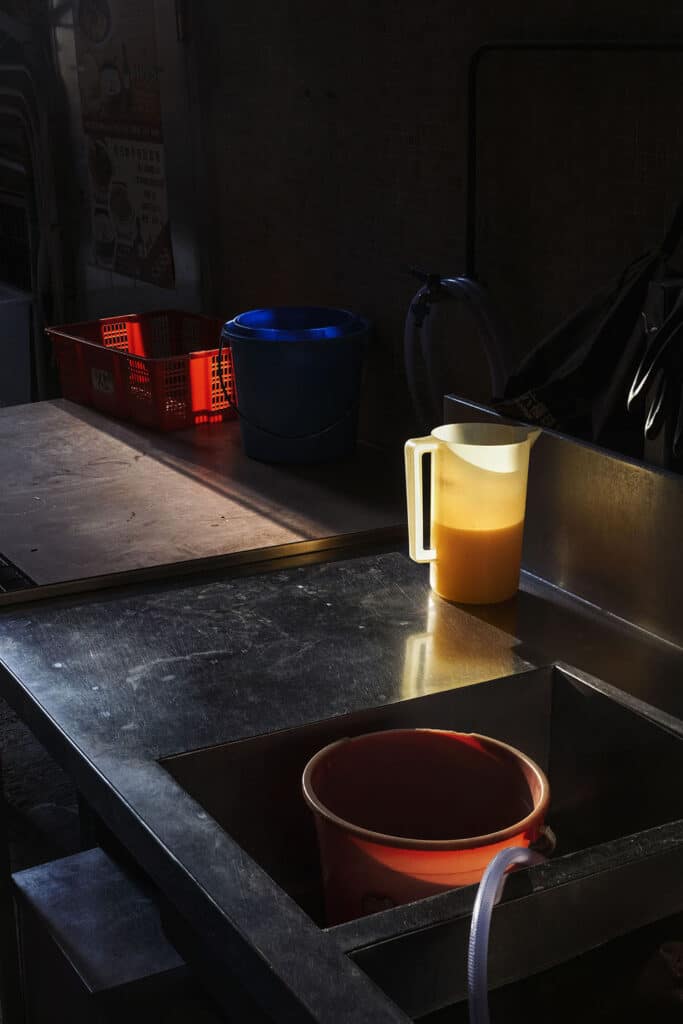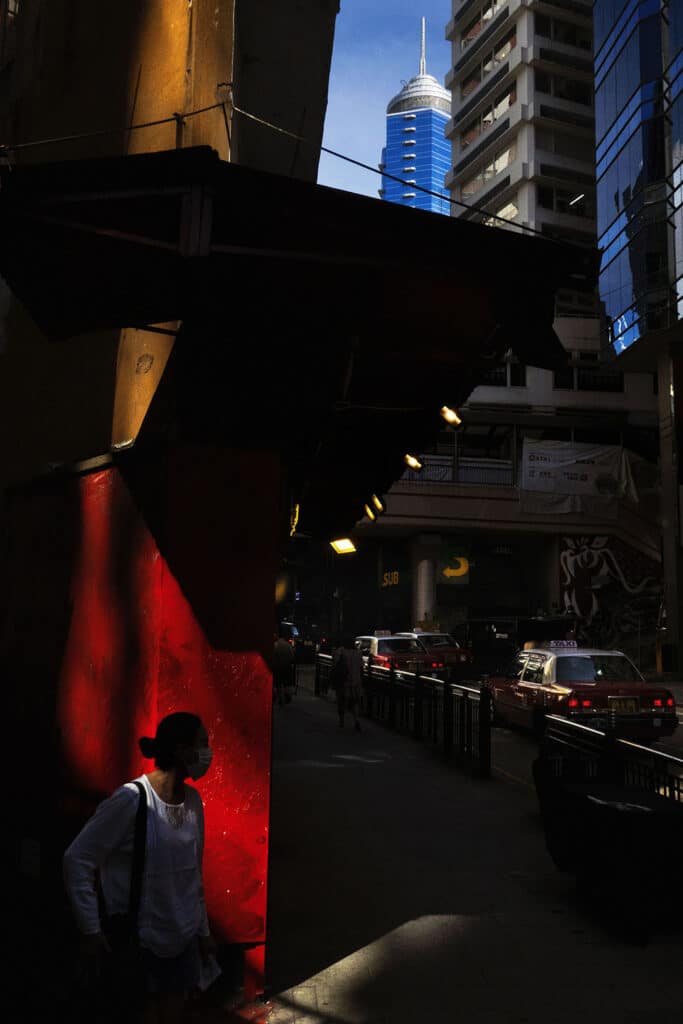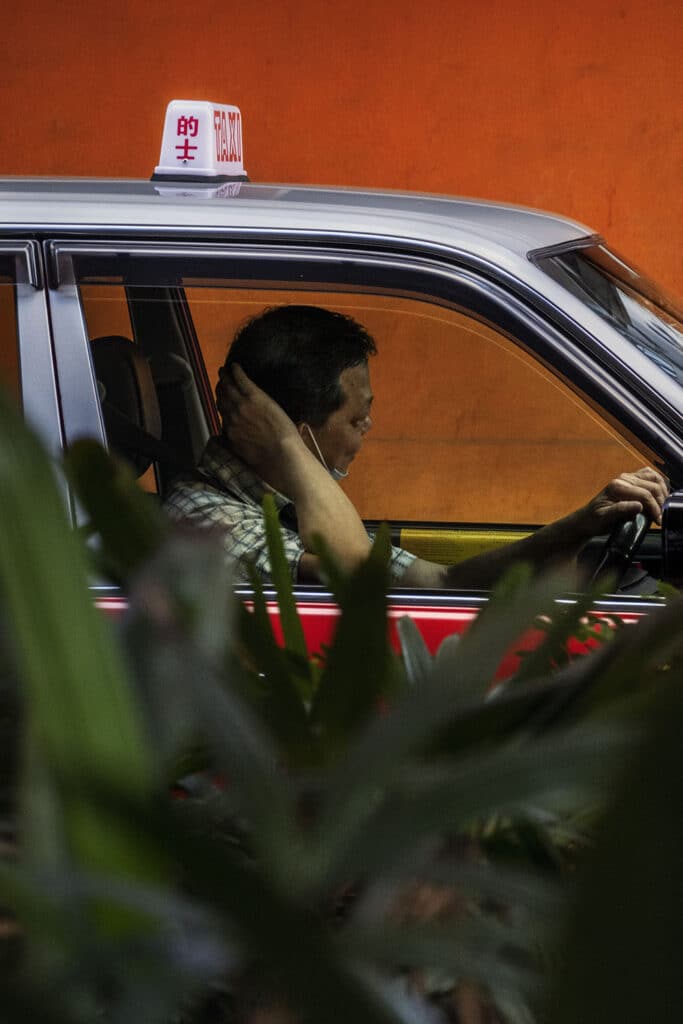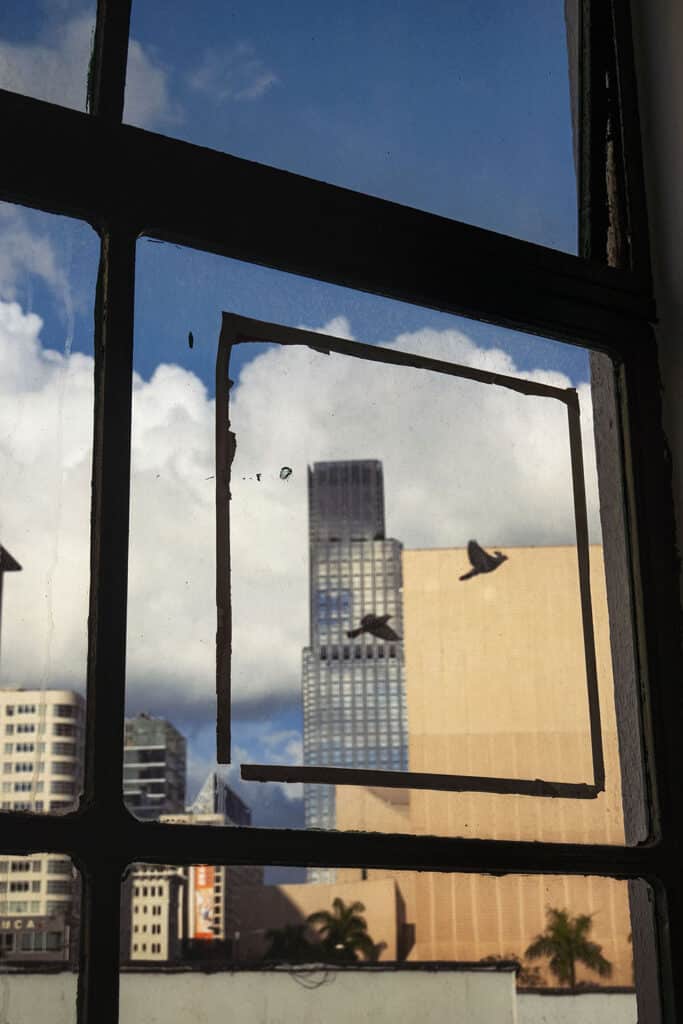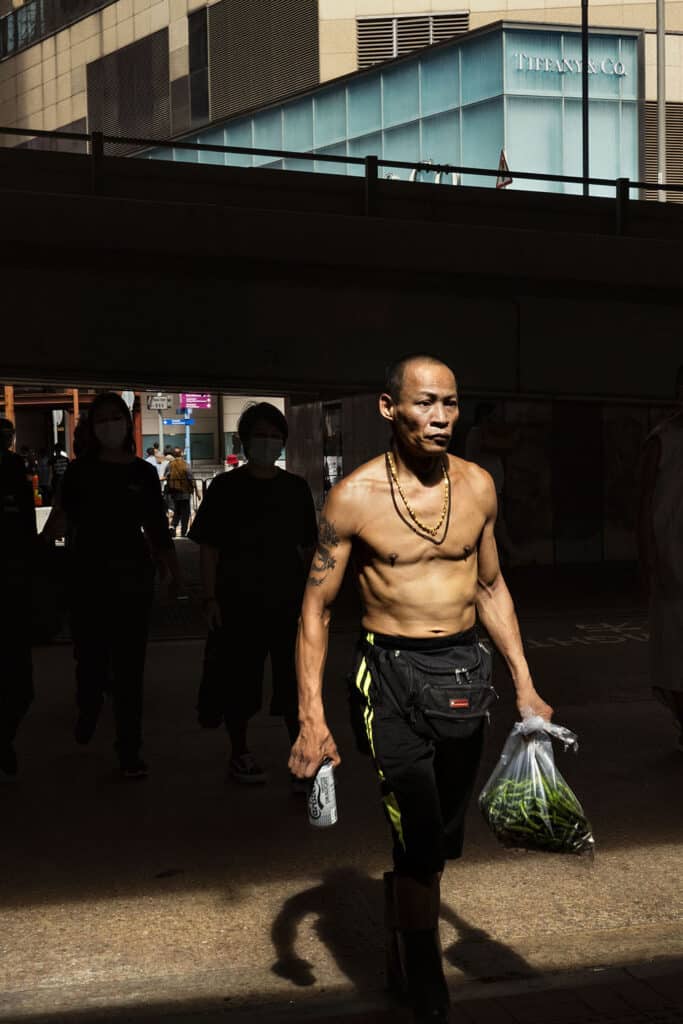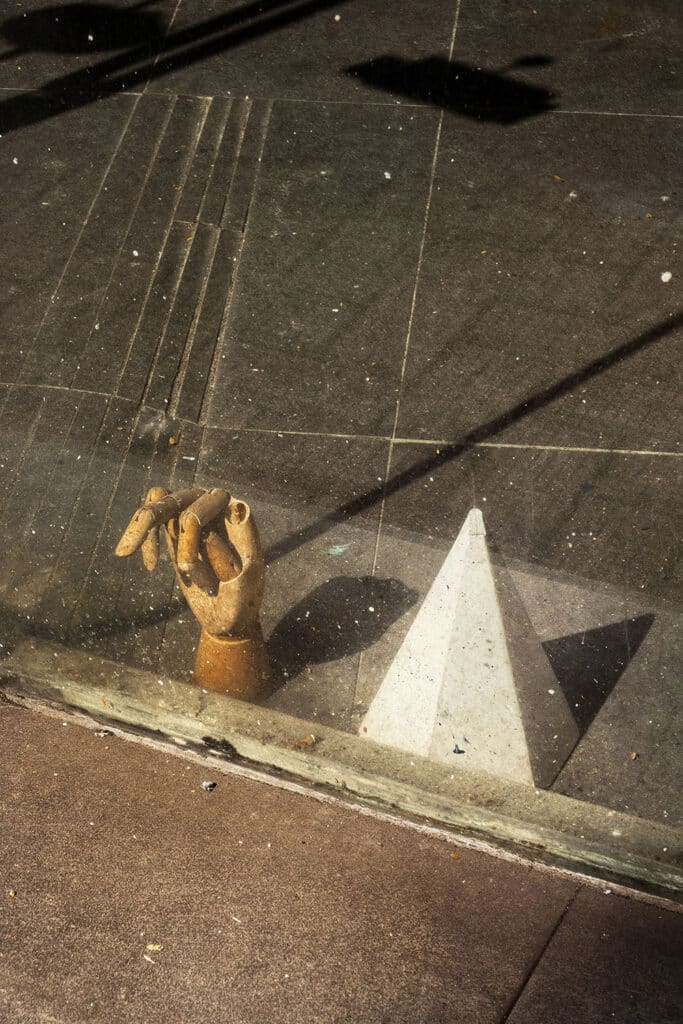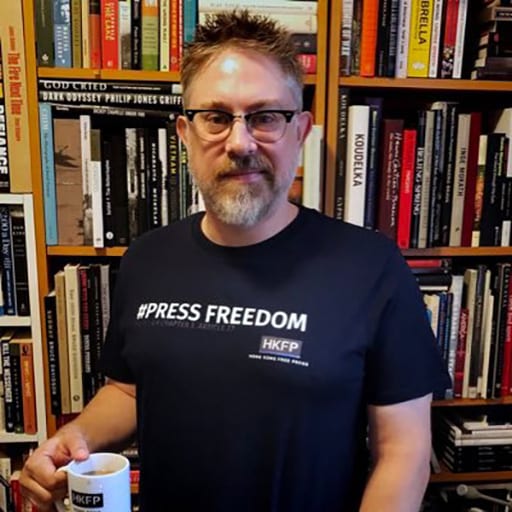It has been 5 years since the mass protests in Hong Kong, and 4 since the Covid-19 shut down the city, as well as the rest of the world. During all of it, photo editor and photographer Mikko Takkunen saw the first draft of the history of these events come across his desk as he worked in the city as a photo editor for The New York Times.
His new monograph, Hong Kong, published by Kehrer, made between February 2020 and June of 2021, is not a look at the protests of 2019, or fully about the pandemic lockdown that followed. Rather, they are a look at a city that was undergoing radical change, becoming less and less of what it was, with no one really sure how the new version of itself would turn out.
The Finnish born Takkunen first started making photographs while studying International Relations at university in Aberdeen, Scotland in the early 2000’s. But it was a movie that brought him into the world of photojournalism and photo editing. His photographs are both subjective and documentary and create a narrative of Hong Kong that is beautiful and captivating.
As Takkunen told Blind, “The hobby turned pretty quickly into a passion, but I was mainly just taking photographs of my friends, bands we’d go see, or trips we made together. It wasn’t until one of my friends showed me the documentary ‘War Photographer’ about James Nachtwey, that I really got introduced to photojournalism and it gave me this epiphany that it was something that I wanted to pursue. It seemed to connect my two big interests: international affairs and photography. Right after graduation from Aberdeen, I ended up starting a photojournalism course in Swansea Metropolitan University (now called University of Wales Trinity Saint David) in Swansea, Wales.”
After graduating, Takkunen worked as an editorial photographer in London for a few years, but never really getting to do the type of international work he was dreaming of, outside of some personal work and work with NGOs in places like Sierra Leone, Lebanon, and Mexico when the opportunities presented themselves. Upon securing a job at Time.com as a photo editor on the International Desk, he stopped taking photographs in any serious way.
“I felt like I didn’t want to be seen trying to play for both teams and possibly competing with photographers whose work I might edit,” he said. “Of course, I made photographs with my phone like everyone else, but it wasn’t until sometime in 2018 when my wife bought me a rangefinder camera as a present that I was started to dabble with cameras a bit more again. I photographed couple of the 2019 Hong Kong protests and started taking some street photographs every now and then. But it wasn’t really until the end of 2019 when I knew that I was going to be transferred back to the United States and the knowledge that our family would be leaving Hong Kong which we had all grown to love so much, that I really felt this strong urge to photograph the city in a more serious way.”
When the pandemic started, Takkunen lost his daily commute in Hong Kong, and, like many of us, began working from home. He began staying home for days at a time, paying more attention to what was happening on the rooftops and streets below his apartment. As time went by, he began again wandering the streets of the city, cameras in hand. He would walk or ride the double decker trams that are ubiquitous on Hong Kong Island, known to the locals as “ding dings.” And while they traveled slowly, from the open 2nd floor of the trams, you can get very pantographic views of city life around you.
Unlike famed Hong Kong photographer Fan Ho, known for his beautiful black and white photographs of the city, Takkunen works in vibrant color. His photographs evoke the work of Saul Leiter, who Takkunen calls an inspiration, along with the rest of the New York School. And of course, there it is also possible to compare Takkunen’s photographs to those of William Eggleston. Eggleston’s color work around the United States, like Takkunen’s, was not so much a documentary project, but does capture a look and a feel of a particular time that has passed.
Like the New York Schools’ members’ work and that of Eggleston, Takkunen’s photography is a more subjective and personal look at the city around him. The photographs create a narrative of the city that reveals the beauty in the mundane. In doing so, it also reveals a side of the city that is easily missed and shows an offbeat side of the city. And while this seems easy enough to do, it is extremely difficult to pull off in practice, which Takkunen does.
But like Ho, Takkunen did come back to places over and over again, looking for the photographs that he wanted to capture. “I had certain ideas in my head, like a particular view from the Star Ferry towards Kowloon. I had noticed these striking red and white bars near the ferry doors. Something about them just appealed to me. Maybe it was partly because they were the colors of the Hong Kong flag. I got this vision of a frame where the bar was on the right and the light was just right and then we’d see the International Commercial Center tower on the Kowloon side in the background. I think I tried it on a couple of occasions but wasn’t happy with the results. On the third go I literally traveled back and forth between Hong Kong Island and Kowloon for hours on end, literally to the point that a man who might or might not have been some kind of undercover police officer, came to ask me why I kept traveling back and forth.”
There is another difference between Takkunen and his influences. While Ho was a Hong Konger, Eggelston was an American, and Leiter was a New Yorker, Takkunen is a “gweilo,” the Cantonese term for a Westerner. Hong Kong was not his city, even though he lived there for 5 years, and through some of its hardest days. He was an outsider in the city, looking at it through an outsider’s eyes.
“In my work as a photo editor, I very much deal with photographs that are about something. With my own work, I let go of all that. The book is my Hong Kong. The pictures are more just my impressions, and they are not really trying to make any argument. I hope people see some unexpected beauty in my photographs, whether it’s in a kitchen still life from Tai Hang where I lived, or neon lights reflected in a puddle in a Causeway Bay alley or find something extraordinary in the ordinary, whether it’s a cyclist in Mong Kok or a bird resting on a Kennedy Town playground. I hope people see I loved Hong Kong.”
Hong Kong is no longer the city that it was before 2019. The repressive National Security Law that was put in place by Beijing in the summer of 2020 has eroded the freedoms that set Hong Kong apart from mainland China. Hong Kong was supposedly going to stay relatively unchanged for 50 years after the handover from the British in 1997, but it lasted less than half of that. Media outlets have been shuttered, and press freedoms curtailed. Opposition figures have been locked away, with the trials ongoing, and few facing the prospect of seeing their freedom again in the face of courts that are no longer truly independent. Others have fled abroad, only to see wanted posters show up in the city they left. “One country, two systems” has been fully eroded.
But the simple beauty of the city cannot be taken away. No new laws, repressive governments, or heavy-handed police tactics can remove the memory of what once was, no matter how hard they try. Takkunen’s work captures memory. It is that memory of a time in Hong Kong when things appeared darkest and hardest that the color of the city shown through to reveal the hidden beauty that many missed at the time, and is now no longer the same.
“Working on the book, which I didn’t start until close to year and half after leaving Hong Kong, has made me reminisce about my time there,” added Mikko Takkunen. “Both of my daughters were born there, in 2018 and 2020, so there’s a lot of memories related to that. I have thoughts of my ‘day job’ at the Times, covering Asia and of course the 2019 protests in the city itself. And, of course, most of all, the time of making these photographs: the days spent out and about in the hot and humid Hong Kong air. I wasn’t keen on Hong Kong right after arriving there in the spring of 2016, but I slowly fell in love with the city. I hope to be back. Hong Kong and its people are special.”
Hong Kong by Mikko Takkunen is published by Kehrer, and available for 35€. Information can be found on the publisher’s website here.

